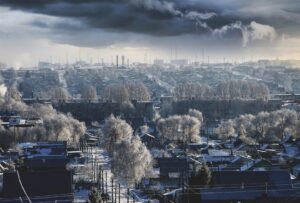Russian Agriculture: A Rich Historical Perspective
Russian agriculture has a deep and rich history that dates back centuries. From the early days of the Russian Empire to the modern era, agriculture has played a crucial role in the development and sustenance of the country. In this article, we will take a closer look at the rich history of Russian agriculture and how it has evolved over time.
Early Beginnings
The history of Russian agriculture can be traced back to the early days of the Russian Empire. In the 9th and 10th centuries, the Slavs, who were the ancestors of modern-day Russians, began practicing agriculture as a means of subsistence. They cultivated crops such as wheat, barley, and rye, and raised livestock such as cattle, sheep, and pigs.
During the medieval period, agriculture in Russia became more organized and efficient. The introduction of new farming techniques and tools, such as the horse-drawn plow, helped increase agricultural productivity. The expansion of trade routes also allowed for the exchange of agricultural products between different regions of the country.
The Serfdom Era
One of the most significant developments in the history of Russian agriculture was the system of serfdom. In the 16th century, the Russian tsars began granting land to the nobility in exchange for military service. The peasants who worked on these lands became serfs, who were essentially tied to the land and could not leave without the permission of their masters.
Under the system of serfdom, agricultural production in Russia grew significantly. The serfs were forced to work the land and produce crops for their masters, leading to an increase in agricultural output. However, the system also led to widespread poverty and inequality, as the serfs had little control over their own lives and were at the mercy of their masters.
The Industrial Revolution
The Industrial Revolution in the 19th century had a profound impact on Russian agriculture. As industrialization spread throughout Europe, there was a growing demand for agricultural products to feed the growing urban populations. Russian agriculture began to modernize, with the introduction of new technologies such as steam-powered machinery and chemical fertilizers.
The abolition of serfdom in 1861 also had a significant impact on Russian agriculture. With the emancipation of the serfs, farmers were able to own their own land and have more control over their own lives. This led to an increase in agricultural productivity and a more efficient use of resources.
The Soviet Era
The Soviet era, which began with the Russian Revolution in 1917, brought about significant changes in Russian agriculture. The Bolsheviks, led by Vladimir Lenin, introduced collectivization as a means of increasing agricultural production. Under the collectivization system, individual farms were merged into collective farms, with the goal of creating large-scale agricultural enterprises.
Collectivization led to widespread resistance from the peasants, who were forced to give up their land and join the collective farms. The system also led to widespread famine and hardship, as the government prioritized industrial development over agricultural production. Despite these challenges, collectivization did lead to an increase in agricultural output and helped feed the growing urban population.
Modern Agriculture in Russia
In the post-Soviet era, Russian agriculture has undergone significant changes. The transition from a planned economy to a market economy has led to the privatization of land and the development of a more diverse agricultural sector. Today, Russia is one of the largest producers of agricultural products in the world, with a focus on crops such as wheat, barley, and sunflowers.
The Russian government has also implemented policies to support the development of agriculture, including subsidies for farmers and investment in modern agricultural technologies. In recent years, there has been a growing interest in organic farming and sustainable agriculture practices, as consumers become more conscious of the environmental impact of traditional farming methods.
In conclusion, Russian agriculture has a long and storied history that has shaped the development of the country. From the early days of the Russian Empire to the modern era, agriculture has been a central part of Russian society and economy. Despite the challenges and changes over the centuries, Russian agriculture continues to thrive and evolve, ensuring that the country remains a major player in the global agricultural market.





